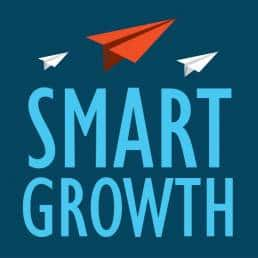The previous Smart Growth column argued for content marketing for SME growth through increasing traffic, potential leads, and, therefore, a good sales funnel. The content, however, has to fit with each stage of the sales cycle to be effective.
A typical sales cycle involves the awareness stage, where you use advertisements and media to make customers aware of your products and services. In the consideration stage, customers who are aware of your offerings will consider it for purchase along with competitors’ offerings and the closing stage is where you get the customer to pay and buy.
Different content for different stages
As an SME marketer, your content for the awareness stage should address the issues your target customers face. Quote your research, list the issues they face in terms of challenges, and answer the frequently asked questions (FAQs).
At this stage, it is more of thought leadership or education and not a hard sell. Content should cover challenges and offer solutions. Articles, whitepapers, blogs, e-books, newsletters, videos, research reports, etc are the best forms of content for this stage.
If you are in the business of chemicals for foundries, for instance, you can have articles on how to improve efficiency and output. If you run a home-cleaning service, you can talk about the right ways to approach dusting or toilet-cleaning in an article or blog. You can use videos to show how germs grow and how to prevent them.

A travel agency can have a video on how to plan a romantic trip. There are numerous such examples to improve content.
For the customers who shortlist you, the content should be different and aimed at making them choose you. In addition to educating them, some amount of hard-selling is called for.
List what features and benefits the buyer should look for and how your brand meets them. A comparative chart of available products will be a good idea too—show them how your product is superior.
Make sure the content focuses on the problems the customers face and not on your features and add-ons. User case studies, testimonials, tips and how-to blogs and videos are all helpful at this stage.
If you are into event management, offer tips for the next annual conference for a corporate client with a list of similar successful events organised by you. It will be a good idea to provide an article on the checklist for conducting a thought leadership event both live and in the video.
Most companies neglect the last stage of sales: closing. Content marketing can play a major role. Focus on why your offerings are the best and not much on how good you are.
Talk about the expertise you bring in that can resolve their issues, after-sales service and the experience and knowledge you have. Use product videos, user interviews, value capture cases, etc.
A constant effort
As an SME marketer, start your content marketing journey to manage it well and not sporadically. Here are some tips to get you started:
1 Plan your target customer segment first. Don’t use a one-size-fits-all approach. The content has to be specific to one segment or even a niche audience. When you have various segments with different value propositions, start with one or two and develop content.
2 Evaluate different templates and choose the ones you are aligned with. Various stages of sales cycles require different formats and templates. It also depends on what form you want to deliver your content in – article, video, blog, podcast, etc. Language, creativity, style, articulation and simplicity play a big part in connecting with your audience. Speak at the same level as target customers.
3 Decide on media. How will you deliver the content—your website, emails, flyers, social media or mobile phones? Just as in any media decision, look at where your target segment is likely to see your message. Third-party articles and research may be sent by email. Video links could be sent through WhatsApp.
4 Plan the frequency. To begin with, do not be too ambitious. Start with a schedule that you can adhere to –from creating content to promoting it. Plan monthly or quarterly, and ensure you don’t launch it without a year’s content planned and ready to go. If your business cannot generate that much content, reduce the frequency.